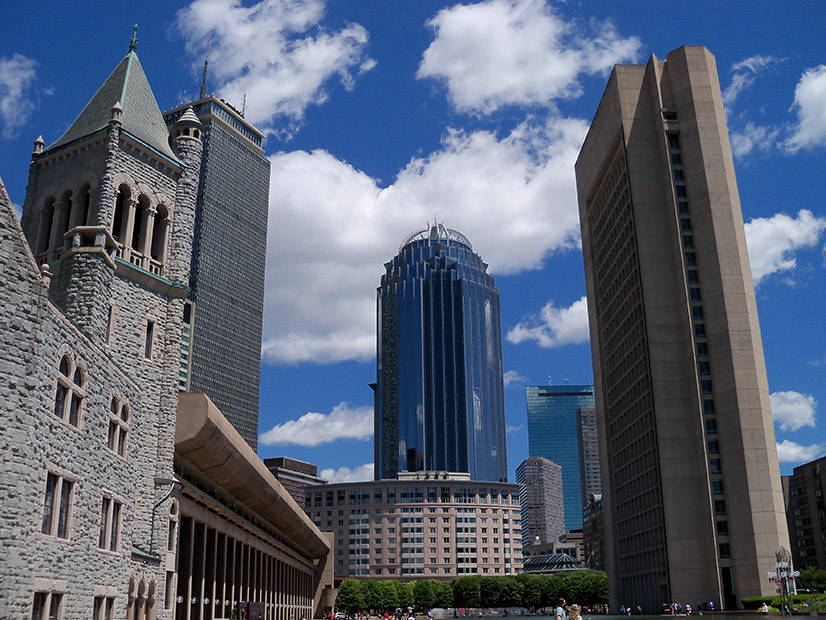
The Boston City Council on Wednesday unanimously passed an amendment to its buildings ordinance that establishes an enforceable emissions performance standard.
“We are going to decarbonize our large buildings over the next 25 years, full stop,” acting council President Matt O’Malley said during the council’s meeting. “Beginning in 2025, and following every five years thereafter, through this ordinance we’ll be setting aggressive but achievable metrics … for buildings to reach a substantial cut in their greenhouse gas emissions.”
The Building Energy Reporting and Disclosure amendment (BERDO 2.0) updates the city’s original reporting ordinance from 2013 by expanding the number of covered buildings and setting fines for noncompliance of $150 to $300/day, depending on building size.
“We’re going to work to make sure that all of the work is centered around equity, equality, addressing environmental justice communities and working with the institutions to get it right,” O’Malley said.
BERDO 2.0 establishes an Emissions Review Board, two-thirds of which will comprise members nominated by community groups. It also establishes an Equitable Investment Fund for emission-reduction projects that benefit environmental justice populations in Boston.
The Massachusetts Sierra Club applauded the council’s decision.
“It’s past due time for the biggest buildings in Boston to be held accountable for their pollution and required to take significant action to reduce their impact,” Michele Brooks, Boston community organizer for Sierra Club, said in a statement.
O’Malley said during the meeting that he expects acting Mayor Kim Janey to sign the ordinance.
“We are going to begin cutting 37 million metric tons of GHG emissions over the next 30 years,” he said. “This ordinance affects 4% of our total building stock; that’s 3,500 buildings, yet those 4% of buildings account for nearly 60% of all building emissions.”
Emissions
Under the new standard, buildings will have to comply with emissions standards on an annual basis according to their classification and measured in metric tons of carbon dioxide equivalent (CO2e) emissions per square foot.
Manufacturing and industrial buildings, for example, must not exceed 23.9 kg of CO2e/square foot/year through 2029, and the allowance reduces gradually to 3.2 kg for 2045-2049. All covered buildings must reach zero emissions by 2050.
Buildings equal to or greater than 20,000 square feet, 15 units but less than 35,000 square feet or 35 units do not have to comply with the standards until 2031. Buildings under 20,000 square feet are not covered by the ordinance.
Owners can mitigate emissions by purchasing renewable energy certificates and securing renewable energy power purchase agreements. They also will have the option of making a compliance payment that the ordinance initially sets at $234/kg CO2e. The compliance payment amount will be reviewed every five years.